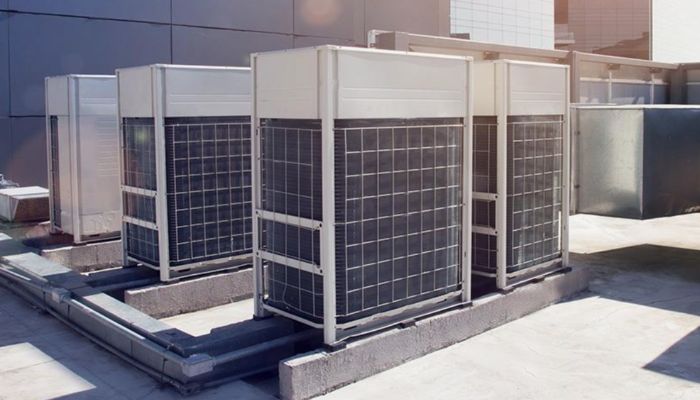Have you ever had to service an HVAC system only to find key components hidden behind walls or ceilings?
Simple maintenance tasks become frustrating when there’s no easy way to reach ductwork, filters, or wiring. The only option is cutting into drywall, which leads to extra work, higher costs, and unnecessary repairs.
HVAC access doors make the job easier by creating built-in access points to essential system components. These panels installed in walls, ceilings, or utility spaces help with quick maintenance, better energy efficiency, and a longer-lasting HVAC system.
Discover how these simple additions can greatly affect HVAC performance and upkeep.
- Why HVAC Systems Need Easy Access
HVAC systems work quietly to keep indoor spaces comfortable, but many of their essential components are hidden in ceilings, walls, or mechanical enclosures.
Small issues—like clogged filters, loose electrical connections, or airflow restrictions—can go unnoticed without easy access. Over time, this increases energy bills, poor system performance, and preventable breakdowns.
Emergency repairs become more complicated, and what could have been a quick fix might require cutting into drywall or removing panels, adding extra costs.
- What Are HVAC Access Doors?
As said, HVAC access doors are specialized panels designed to access hidden HVAC components easily. They allow technicians and maintenance personnel to perform maintenance, inspections, and repairs in residential or commercial buildings without cutting into drywall or disrupting the structure.
HVAC access doors are also available in various sizes, materials, and finishes, allowing them to easily blend into interiors while improving energy efficiency, system longevity, and air quality.
They are a simple yet essential upgrade that helps keep heating and cooling systems running properly.
- Benefits of Access Doors for HVAC Efficiency
Here are some key benefits of installing HVAC access doors:
- Reduced Energy Waste: Properly sealed HVAC access doors prevent air leaks and blockages, allowing the system to run efficiently and reduce energy costs.
- Healthier Air Quality: Regular filter changes and duct cleanings become hassle-free, reducing dust, allergens, and pollutants circulating in the air.
- Longer HVAC Lifespan: Easy access allows for routine inspections, catching minor issues before they lead to major breakdowns.
- Lower Repair Costs: Instead of cutting into drywall or removing panels, HVAC access doors provide a designated entry point, helping technicians work efficiently and avoid extra labor and material expenses.
- Where to Install Access Doors for HVAC Systems
Strategically placing access doors ensures easier maintenance and optimal system performance.
Here are common areas where they are installed:
- Ductwork and Air Handlers: Access doors installed along duct systems and near air handlers make it easier to inspect, clean, and repair internal components without disrupting surrounding structures.
- Mechanical Rooms: HVAC units housed in mechanical rooms benefit from access doors, which allow technicians to reach key system controls, electrical connections, and filters without unnecessary obstructions.
- Ceilings and Walls: Placing access doors in ceilings or utility walls provides entry points for servicing concealed HVAC components, including dampers, vents, and electrical wiring.
- Rooftop Units: Access doors provide a secure way to reach key components while protecting buildings with rooftop HVAC systems from weather exposure and unauthorized tampering.
- Creative Ways to Enhance HVAC System
Beyond routine maintenance, small upgrades and smart design choices can make HVAC systems more efficient and effective.
Here are five creative ways to enhance performance:
- 1. Smart Thermostats + Easy Access
Pairing a smart thermostat with well-placed HVAC access doors makes monitoring and adjusting system performance easier. A thermostat helps regulate temperatures automatically, while access doors ensure quick maintenance when filters or ducts need attention.
Together, these features improve energy efficiency and reduce system wear. With easy access to tune-ups and smart controls optimizing usage, HVAC equipment runs more smoothly and lasts longer.
- 2. Hidden Vents & Stylish Covers
Standard HVAC vents can be an eyesore, but decorative vent covers offer a stylish solution. They come in various designs and materials, blending seamlessly with modern and traditional interiors without restricting airflow.
Some vent covers feature adjustable dampers for better air control. Choosing the right covers keeps rooms polished while allowing the HVAC system to work efficiently.
- 3. Soundproofing Panels
Loud HVAC units can be disruptive, especially in offices, apartments, or quiet spaces. Adding insulated access doors near noisy components helps reduce sound transfer while keeping equipment easy to reach.
These doors contain sound-absorbing materials that muffle vibrations and mechanical noise.
- 4. Zoned Heating & Cooling
Zoning systems help direct heating and cooling to specific areas, improving comfort and efficiency. HVAC access doors make installing and adjusting dampers, which control airflow between different zones, easier.
- Conclusion
Keeping an HVAC system running efficiently doesn’t have to be complicated.
Well-placed access doors make maintenance easier, helping to prevent costly repairs and improve overall performance. Small upgrades decrease energy costs and ensure reliable heating and cooling year-round.
With the right setup, any space can stay comfortable while the system works smoothly behind the scenes.
